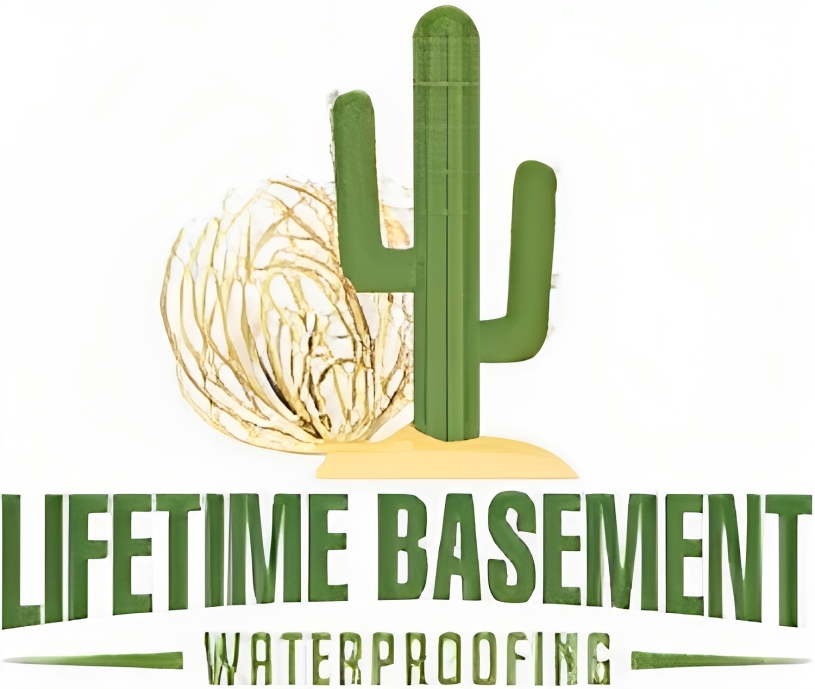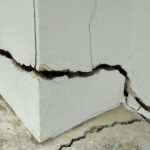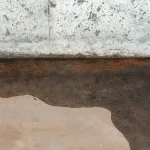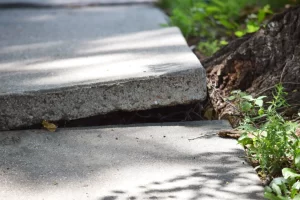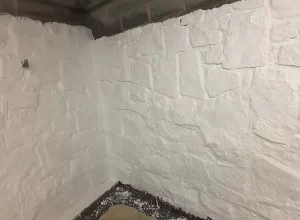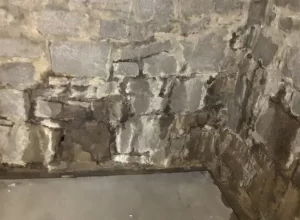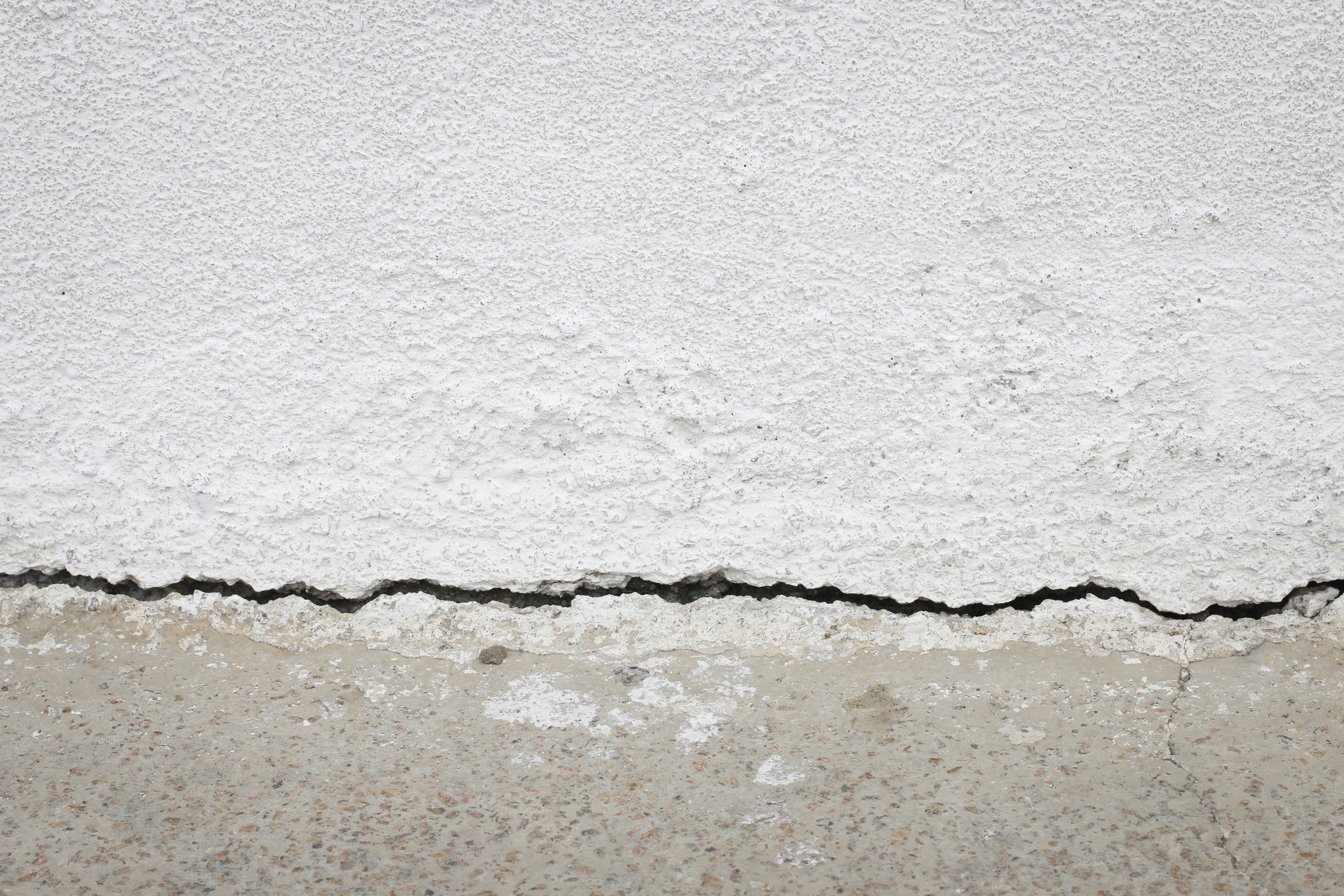
To prevent water damage and maintain your home’s stability, it’s crucial to address foundation cracks promptly. Identify crack types like vertical, horizontal, or diagonal early on to prevent further damage. Gather safety gear, a wire brush, chisel, and sealants to start repairs. Clean the crack, apply sealer, reinforce larger cracks, and let the material cure properly. Regular inspections, proper drainage, and moisture control are key in preventing future issues. Consider professional foundation repair services for help with accurate assessments and expert repairs. Master the art of foundation crack repairs to safeguard your home for years to come.
Key Takeaways
- Regularly inspect for foundation cracks to prevent water infiltration.
- Use appropriate materials like epoxy resin to repair different crack types.
- Ensure proper drainage around the home to avoid water pooling.
- Address cracks promptly to prevent water damage and structural issues.
- Implement proactive measures to maintain a healthy foundation and prevent costly repairs.
Importance of Foundation Maintenance
Routine fundamental maintenance is essential for ensuring the stability and longevity of your home. Neglecting this important aspect can lead to costly repairs and structural issues down the line. By staying proactive and addressing any early signs of foundation problems, you can save yourself from major headaches in the future.
One key reason to prioritize foundation maintenance is to prevent water damage. Water is one of the primary culprits when it comes to foundation issues. Poor drainage, leaks, or improper grading can all contribute to water seepage, which can weaken the foundation over time. Regularly checking for any signs of water infiltration and addressing them promptly can help preserve the integrity of your home’s foundation.
Additionally, foundation maintenance can help you avoid more extensive repairs in the future. By catching minor issues early on, you can prevent them from escalating into major problems that require costly solutions. Simple tasks like inspecting for cracks, monitoring the soil around your foundation, and ensuring proper drainage can go a long way in maintaining the health of your home’s foundation.
Identifying Common Foundation Crack Types
To better understand the importance of foundation maintenance, you must first learn how to identify common types of foundation cracks. By recognizing these cracks early on, you can prevent further damage and costly repairs. Here are some common foundation crack types to watch out for:
- Vertical Cracks: These cracks typically run straight up and down and are often caused by normal settling of the house. While they’re usually not a major concern, monitoring them is crucial to guarantee they don’t widen over time.
- Horizontal Cracks: Horizontal cracks are more serious and could indicate a larger underlying issue such as excessive soil pressure or water damage. These cracks should be inspected by a professional to determine the root cause.
- Stair-Step Cracks: These cracks resemble a staircase pattern and are commonly found in brick or concrete block foundations. Stair-step cracks may signal foundation settlement or shifting and should be addressed promptly.
- Diagonal Cracks: Diagonal cracks are often a result of soil pressure or water saturation. These cracks can allow water to seep into the foundation, leading to further damage if not repaired.
Tools and Materials Needed for Repair
You’ll need specific tools and materials to effectively repair foundation cracks. To begin with, gather the following items before starting the repair process: safety goggles, gloves, a wire brush, a chisel, a hammer, a vacuum with a brush attachment, a caulk gun, hydraulic cement, epoxy injection resin, concrete sealer, and a putty knife. Safety goggles and gloves are crucial to safeguard your eyes and skin from any debris or chemicals during the repair.
The wire brush and chisel will help you clean out the crack, removing any loose concrete or debris that could impede the repair. A vacuum with a brush attachment can be used to make sure the crack is completely clean before proceeding. The caulk gun is necessary for applying the hydraulic cement or epoxy injection resin into the crack effectively.
Hydraulic cement is ideal for filling and sealing larger cracks, while epoxy injection resin is better suited for hairline cracks. Once the crack is filled and sealed, a concrete sealer should be applied to prevent further water damage. A putty knife will come in handy for smoothing out the sealant and guaranteeing a clean finish. With these tools and materials in hand, you’re ready to tackle foundation crack repairs effectively.
Step-by-Step Guide to Repairing Cracks
Prepare your workspace by gathering all the necessary tools and materials for repairing foundation cracks. Once you have everything you need, follow these steps to effectively repair the cracks in your foundation:
- Clean the Crack: Begin by removing any debris, loose concrete, or dust from the crack using a wire brush or a vacuum. This step guarantees that the repair material can bond properly with the foundation.
- Apply the Sealer: Use a concrete sealer or epoxy resin to fill the crack. Apply the sealer with a caulking gun, making sure to fill the entire crack evenly. Smooth out the surface with a putty knife.
- Reinforce with Fabric: For larger cracks, consider using a fabric strip or mesh to reinforce the repair. Place the fabric over the sealed crack and apply more sealer on top to secure it in place.
- Finish and Let It Cure: Once the crack is sealed and reinforced, allow the repair material to cure according to the manufacturer’s instructions. This usually involves letting it dry for a specified amount of time before checking for any additional sealing or finishing touches needed.
Preventing Future Foundation Damage
To protect your foundation against future damage, regularly inspect for early signs of deterioration. Consistently check for any new cracks, gaps, or shifts in the foundation walls or floors. Watch out for moisture buildup, mold growth, or musty odors, as these can indicate water seepage issues. Addressing these warning signs promptly can help prevent more extensive damage in the future.
Maintaining proper drainage around your home is vital for preventing foundation damage. Make sure that your gutters and downspouts are clear of debris and divert water away from the foundation. Grade the soil around your home so that it slopes away from the foundation, preventing water from pooling around it.
Another important step in preventing future foundation damage is to manage the trees and vegetation near your home. Tree roots can exert pressure on the foundation, leading to cracks and structural issues. Keep trees and shrubs trimmed and maintain a proper distance between them and the foundation.
Additionally, controlling the moisture levels in your home can help preserve the foundation. Use a dehumidifier in damp areas like basements to reduce moisture levels and prevent water from seeping into the foundation. By taking these proactive measures, you can protect your foundation from potential damage and ensure the stability of your home for years to come.
Hiring Professionals Vs. DIY Approach
When contemplating foundation crack repair, weighing the pros and cons of hiring professionals versus taking a DIY approach is essential for ensuring the effectiveness and longevity of the repair.
Here are some key points to ponder:
- Expertise: Professional contractors have the knowledge and experience to accurately assess the severity of the foundation crack and determine the best repair method. DIY attempts may lack the precision needed for a lasting solution.
- Tools and Equipment: Professionals have access to specialized tools and equipment required for foundation crack repair. These tools can be costly to purchase for a one-time project if you decide to go the DIY route.
- Time and Convenience: Hiring professionals can save you time and effort. They can complete the repair efficiently, allowing you to focus on other tasks. DIY repairs, especially if you lack experience, may take longer and lead to frustration.
- Warranty and Guarantee: Professional repair companies often provide warranties or guarantees for their work. This can offer you peace of mind knowing that if any issues arise post-repair, they’ll come back to rectify them. DIY repairs don’t typically come with such assurances.
Taking into account these factors can help you make an informed decision on whether to hire professionals or opt for a DIY approach when it comes to foundation crack repair.
Cost Considerations for Repair
Considering the financial implications of foundation crack repair is crucial for making a well-informed decision on how to proceed. The cost of repairing foundation cracks can vary depending on various factors. One of the primary considerations is the extent of the damage. Minor cracks that are caught early may be less expensive to repair compared to larger, more severe cracks that require extensive work.
Another cost consideration is the cause of the foundation crack. If the crack is a result of poor soil compaction or drainage issues, addressing these underlying causes may add to the overall repair costs. Additionally, the location of the crack can impact the price, as accessibility plays a significant role in determining the complexity of the repair job.
When evaluating the cost of foundation crack repair, it’s important to obtain multiple quotes from reputable contractors. Comparing quotes can help you get a better understanding of the average market price and make certain that you aren’t overcharged for the repairs. Keep in mind that while cost is important, quality shouldn’t be compromised. Opting for cheaper, low-quality repairs may end up costing you more in the long run if the issue resurfaces.
Lastly, some homeowners insurance policies may cover foundation crack repairs, depending on the cause of the damage. Reviewing your insurance policy and consulting with your provider can help you determine if you’re eligible for coverage, potentially reducing the financial burden of the repair.
Maintenance Tips for a Healthy Foundation
Proper maintenance of your foundation is vital for guaranteeing its longevity and stability. By following these maintenance tips, you can help keep your foundation in excellent condition:
- Monitor and Control Moisture: Check for any signs of water accumulation around your foundation. Ensure proper grading away from your foundation and address any areas where water pools or seeps towards the base of your home.
- Inspect for Cracks and Settling: Regularly examine your foundation for any cracks, gaps, or signs of settling. Addressing these issues promptly can prevent further damage and maintain the structural integrity of your foundation.
- Maintain Proper Drainage: Ensure your gutters and downspouts are clear of debris and direct water away from the foundation. Consider installing extensions to make sure water is discharged at least 5-10 feet away from your home.
- Landscaping Considerations: Be mindful of the plants and trees near your foundation. Avoid planting large trees too close to your home, as their roots can potentially damage the foundation. Additionally, make sure the soil around your foundation is properly graded to prevent water from pooling.
Regularly implementing these maintenance tips can help you safeguard your foundation against potential damage, preserving the structural integrity of your home for years to come.
Frequently Asked Questions
Can Foundation Crack Repair Be Covered by Insurance?
Certainly, foundation crack repair can at times be covered by insurance. It is crucial to review your policy details and consult with your provider. Tackling problems promptly and documenting damage can assist with the insurance claim process.
How Long Does It Typically Take to Repair a Foundation Crack?
Foundation crack repairs typically take a few hours to a couple of days, depending on the severity. Proper evaluation, preparation, and curing time are vital. Make sure to follow recommended guidelines for a successful repair.
Are There Any Warning Signs That Indicate a Foundation Crack May Be Forming?
If you notice new cracks in your walls, sloping floors, or doors that are suddenly difficult to close, these could be warning signs that a foundation crack may be forming. It’s important to address these issues promptly.
Can Foundation Crack Repairs Be Done During Any Season or Are There Specific Conditions That Are Ideal for Repair?
You can repair foundation cracks throughout the year, but ideal conditions are dry weather. Winter repairs may be challenging due to freezing temperatures. Consider professional help for effective and lasting solutions regardless of the season.
Are There Any Eco-Friendly or Non-Toxic Options Available for Foundation Crack Repair?
Yes, there are eco-friendly and non-toxic options available for foundation crack repair. These solutions are safe for both your home and the environment. Consider exploring these alternatives for a more sustainable approach to your repair needs.
Conclusion
Lifetime Basement Waterproofing has been Atlanta’s premier basement waterproofing company for over 30 years.
As a family-owned and operated company, we specialize in basement waterproofing and offer a wide range of expert services.
Our expertise extends to crawlspace encapsulation, exterior foundation waterproofing, foundation crack repair, and designing drainage solutions such as French drains.
When it comes to wet basement repair needs, you can trust Lifetime Basement Waterproofing for quality and reliable service.
